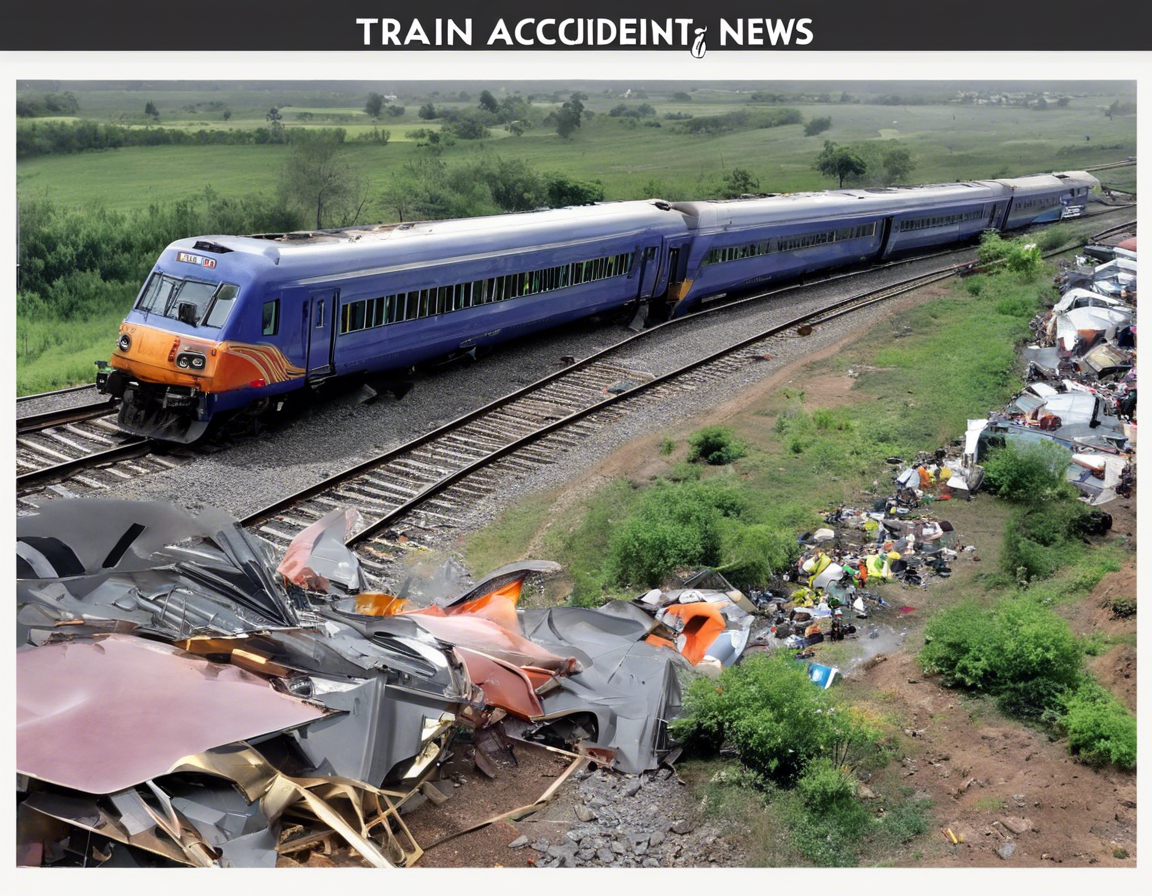Train accidents, although not as common as other forms of transportation accidents, can have devastating consequences for passengers, crew members, and bystanders. Staying informed about the latest news updates regarding train accidents is crucial for understanding the causes, impact, and preventive measures associated with such incidents. This comprehensive guide aims to provide a detailed overview of recent train accident news updates, highlighting key incidents, causes, consequences, and safety measures.
Recent Train Accident News Updates
1. Key Incidents:
- In recent months, several high-profile train accidents have made headlines worldwide, such as the derailment of a passenger train in Country X due to track maintenance negligence.
- Another significant incident involved a collision between two freight trains in Country Y, resulting in multiple casualties and extensive damage.
2. Causes of Train Accidents:
- Human Error: Many train accidents are caused by human error, such as reckless driving, fatigue, distraction, or miscommunication among crew members.
- Infrastructure Issues: Poor maintenance of tracks, signaling systems, and train components can lead to accidents.
- Weather Conditions: Adverse weather conditions like heavy rain, snow, or fog can significantly impact train operations and safety.
3. Consequences of Train Accidents:
- Train accidents can result in loss of life, injuries, property damage, environmental pollution, and disruption of transportation services.
- The aftermath of a train accident often involves rescue and recovery operations, investigations, legal proceedings, and efforts to prevent future incidents.
4. Safety Measures and Regulations:
- Authorities and railway companies continuously work to improve safety measures, including training programs for staff, regular maintenance checks, technology upgrades, and compliance with safety regulations.
- Implementing automated safety systems, such as Positive Train Control (PTC), can help prevent collisions and derailments.
Frequently Asked Questions (FAQs) About Train Accidents
1. What are the common causes of train accidents?
- Train accidents can be caused by factors such as human error, infrastructure issues, weather conditions, mechanical failures, and signal failures.
2. How can passengers stay safe during a train journey?
- Passengers should follow safety instructions, stay seated while the train is moving, hold onto handrails, and be aware of emergency exits.
3. How do authorities investigate train accidents?
- After a train accident, authorities conduct thorough investigations to determine the cause, contributing factors, responsibility, and potential safety recommendations.
4. What role do safety regulations play in preventing train accidents?
- Safety regulations enforced by railway authorities are crucial for ensuring compliance with safety standards, maintenance practices, crew training, and emergency response procedures.
5. How can technology help prevent train accidents?
- Advanced technology, such as Positive Train Control (PTC) systems, collision avoidance systems, and predictive maintenance tools, can enhance safety and prevent accidents.
6. Are there international efforts to improve train safety globally?
- International organizations, such as the International Union of Railways (UIC) and the International Transport Forum (ITF), collaborate on global safety initiatives, research, and best practices.
7. What should bystanders do in case of a train accident?
- Bystanders witnessing a train accident should stay away from the tracks, call emergency services, provide assistance to injured individuals, and follow instructions from authorities.
8. How can train operators enhance safety for passengers and crew members?
- Train operators can improve safety by investing in training programs, safety equipment, emergency response drills, and collaboration with regulatory agencies.
9. What are some long-term measures to prevent train accidents?
- Long-term measures to prevent train accidents include continuous monitoring of infrastructure, implementation of safety technologies, investment in maintenance, and regular safety audits.
10. How can the public contribute to improving train safety?
- The public can contribute to improving train safety by reporting suspicious activities, following safety guidelines, staying informed about safety measures, and supporting initiatives for safer railways.
By staying informed about the latest train accident news updates, understanding the causes and consequences of such incidents, and advocating for improved safety measures, we can work together to prevent future tragedies and ensure the well-being of all individuals involved in railway operations.



